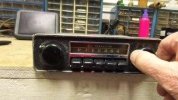I run a ladder test over the chrono to look for nodes then do a seating depth test.

 www.loaddevelopment.com
www.loaddevelopment.com

 www.loaddevelopment.com
www.loaddevelopment.com

Load Development Methods - LoadDevelopment.com
Load development is one of the most important aspects when it comes to precision rifle shooting, there are three main load development methods.

Load Development: Ladder Test Method - LoadDevelopment.com
The ladder test method for development of a load for your rifle is proven by reloaders and expert shooters accross the world to work. Here's how.
Last edited:

